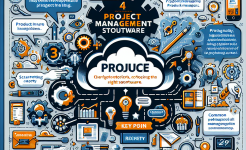TR, or Technical Review, in the Integrated Product Development (IPD) process is a crucial checkpoint that assesses the technical maturity of a product at various stages. It serves as a quality gate, ensuring that the product meets the defined technical requirements before moving on to the next phase. This review is not just a formality but a comprehensive evaluation of the product's design, components, and overall technical feasibility.
During a TR, cross-functional teams come together. These teams typically include engineers, designers, product managers, and quality assurance experts. They bring different perspectives to the table. Engineers focus on the functionality and performance of the product's technical aspects, while designers consider the user experience and aesthetics. Product managers ensure that the product aligns with the market needs and business goals, and quality assurance experts look for any potential defects or non-compliances.
The TR process is structured to cover multiple dimensions. It evaluates the product's architecture, the selection of materials and components, and the manufacturing processes that will be involved. By conducting these in-depth reviews, companies can identify and address technical issues early on. This proactive approach helps prevent costly rework and delays further down the development cycle, which is essential for accelerating the time to market.
The Role of TR in Identifying and Resolving Technical Risks
One of the key contributions of TR in the IPD process is its ability to identify technical risks. Technical risks can range from unproven technologies in the product design to potential compatibility issues between different components. Through a detailed review, the team can spot these risks and develop strategies to mitigate them.
For example, if a new product incorporates a cutting-edge technology, the TR might reveal that the technology has not been fully tested in real-world scenarios. This early identification allows the team to either invest more time in validating the technology or consider alternative solutions. By addressing these risks promptly, the product development process can proceed smoothly without unexpected roadblocks.
Resolving technical risks also involves collaboration across different departments. The engineering team may need to work closely with the research and development department to find solutions to complex technical problems. The procurement team might be involved in sourcing alternative components if the original ones pose a risk. This cross-functional cooperation not only speeds up the risk resolution process but also ensures that all aspects of the product are considered.
Moreover, TR provides a platform for continuous learning. As the team encounters and resolves technical risks, they gain valuable insights that can be applied to future product development projects. This knowledge transfer helps improve the overall efficiency and effectiveness of the company's product development processes, further reducing the time it takes to bring new products to market.
How TR Facilitates Cross-Functional Collaboration
TR acts as a catalyst for cross-functional collaboration in the IPD process. In a product development project, different departments often have their own goals and priorities. The marketing team is focused on understanding customer needs and positioning the product in the market, while the engineering team is centered on building a technically sound product.
During a TR, these different departments are brought together to discuss the product's progress. This interaction allows for a better understanding of each other's perspectives. The marketing team can share valuable market insights with the engineering team, helping them to align the product's features with customer demands. At the same time, the engineering team can communicate the technical limitations and possibilities to the marketing team, enabling them to develop more accurate marketing strategies.
Cross-functional collaboration during TR also streamlines decision-making. Instead of decisions being made in isolation by individual departments, the collective knowledge and expertise of the team are utilized. For instance, when deciding on a product's feature set, the product management team, along with input from engineering, marketing, and other relevant departments, can make a more informed decision. This collaborative approach ensures that the decisions made are in the best interest of the overall product and the company's business goals.

Furthermore, TR helps build stronger relationships among team members. Regular interactions during the review process foster trust and communication. Team members get to know each other's strengths and weaknesses, which enables better cooperation. This positive working environment not only improves the quality of the product but also speeds up the development process, as there are fewer misunderstandings and delays due to miscommunication.
The Impact of TR on Product Quality and Time to Market
Maintaining high product quality is essential for a company's success in the market. TR plays a significant role in ensuring that the product meets or exceeds quality standards. By thoroughly evaluating the product's technical aspects at each stage of development, potential quality issues can be identified and rectified early.
For example, in the design phase, a TR can detect flaws in the product's architecture that could lead to performance problems or reliability issues. By addressing these issues before moving to the manufacturing stage, the company can avoid costly recalls and customer dissatisfaction. High-quality products also tend to have a competitive edge in the market, which can lead to increased sales and market share.
When it comes to time to market, TR has a direct and positive impact. By identifying and resolving technical issues early, eliminating rework, and facilitating cross-functional collaboration, the overall product development cycle is shortened. A product that reaches the market quickly can capture market opportunities before competitors. It can also take advantage of emerging trends and customer demands in a timely manner.
In addition, the iterative nature of the TR process allows for continuous improvement. As the product evolves through different development stages, the feedback from each TR helps refine the product. This iterative approach ensures that the final product is not only of high quality but also developed in the shortest possible time, giving the company a significant advantage in the highly competitive business landscape.
Leveraging TR for Continuous Improvement in IPD
TR is not just a one-time event but a continuous process that can be leveraged for improvement in the IPD framework. After each review, the team should conduct a post-mortem to analyze what went well and what could be improved. This analysis can then be used to refine the TR process itself.
For example, if the team finds that a particular type of technical risk is consistently overlooked during the review, they can modify the review checklist to ensure that it is not missed in future projects. Similarly, if the communication channels between certain departments during the TR are found to be ineffective, steps can be taken to improve them.
Continuous improvement also extends to the overall product development process. The insights gained from TR can be used to optimize the product roadmap. If a new technology is identified as having potential during a TR, the company can adjust its long-term product plans to incorporate it. This forward-thinking approach helps the company stay ahead of the competition and adapt to changing market dynamics.
Moreover, by promoting a culture of continuous improvement through TR, the company can attract and retain top talent. Employees are more likely to be engaged and motivated when they see that their work is contributing to the improvement of the overall process. This, in turn, leads to a more innovative and efficient product development environment, further accelerating the time to market for new products.
In conclusion, TR in the IPD process is a multi-faceted and essential element that significantly accelerates product time to market. It serves as a critical mechanism for identifying and resolving technical risks, facilitating cross-functional collaboration, ensuring product quality, and enabling continuous improvement. By understanding the importance of TR and implementing it effectively, companies can gain a competitive edge in the market. They can bring high-quality products to market faster, meet customer demands in a timely manner, and ultimately achieve greater business success. As the business landscape continues to evolve, the role of TR in the IPD process will only become more crucial for companies looking to stay ahead in the race for market share and innovation. It is imperative that organizations invest in developing robust TR processes and train their teams to make the most of this valuable tool in the product development journey.
ARTICLE TITLE :How TR in the IPD process accelerates product time to market ,AUTHOR :ITpmlib

















